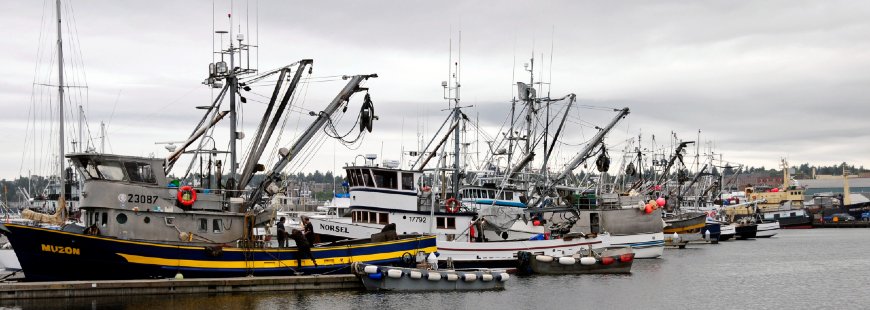As our country slowly recovers from the coronavirus pandemic and the subsequent economic shutdown, the Biden administration has chosen to focus its attention on our nation’s infrastructure, with good reason. Historically, large-scale infrastructure projects with their influx of manufacturing and construction jobs have successfully helped the U.S. rebound after economic recessions.
Although the word “infrastructure” traditionally conjures up images of highways, train tracks, and shipping ports, many American industries depend on a wide variety of infrastructure to stay successful. Moreover, the definition of “infrastructure” has evolved over time, especially because of ever-changing technology. Thirty years ago, for example, basic access to the internet wasn’t even part of the infrastructure conversation; today it serves as the foundation of operations for many businesses.
The fishing and seafood industries are no different. The infrastructure fishermen and seafood businesses rely on at every stage, bringing catch from sea to dock or dock to table, must modernize with the times. The fishing industry needs shore side access to ocean fisheries as well as landside infrastructure to keep their product fresh before selling it to market. They also need electronic infrastructure in place to keep fisheries resources healthy and abundant so that they can continue to fish sustainably for years to come. To this end, addressing the infrastructure needs of the fishing and seafood industries should be top of the list of opportunities for infrastructure investment. By doing so, Congress and the Biden administration will support the economic foundations of working waterfronts and coastal communities around the nation.
The Network recommends several ways the Biden administration and Congress could strengthen and improve infrastructure for the fishing and seafood communities.
Improve catch accounting and data management
Fisheries scientists must conduct routine full stock assessments in order to assess how many fish can be sustainably removed from the water, prevent overfishing, and avoid creating a depleted or overfished stock. Fisheries managers also need reliable, accurate, and timely data about fishermen’s catch and landings in order to know when fishing effort must stop in order not to surpass the catch limit. Traditionally, much of this data collection has been done through on-vessel observers, record-taking at the dock, or, in the case of recreational fishing, the honor system to report catch often months later. Technological advancements, however, can allow for electronic monitoring of vessels, real-time tracking of catch, and apps on hand-held devices for recording catch in the moment.
An infrastructure package that moves forward could fully fund comprehensive and regular stock assessments in all regions, with an objective of full assessments of all directed fisheries at least every three years and annual assessments for all stocks that are overfished or subject to overfishing. Legislation could also fund full implementation of electronic monitoring in all observed fisheries within five years, unless the fishery is found to be incompatible with the new system, and promote other technologies to improve real-time tracking of all catch including recreational landings.
Support working waterfronts infrastructure
Like many other water-dependent industries, the fishing and seafood industries require waterfront access through ports and docks, but these coastal points of access are often competing with the growing demand for development of shore side property for houses, condos, or hotels. Representatives Pingree and Wittman have introduced a bill, the Keep America’s Waterfronts Working Act, which has several provisions to preserve and expand access to coastal waters for water-dependent businesses, as well as grant programs to ensure preservation of working waterfronts. Congress should support and pass this bill to ensure long-term access to this crucial infrastructure.
Promote direct-to-consumer markets for U.S. seafood
The pandemic has shown a need for the fishing and seafood industries to create a direct-to-consumer market for seafood products. Although restaurants and stores are slowly opening up to full capacity, fishermen and seafood purveyors should continue to grow the markets they cultivated and developed during the economic shutdown to provide job security through an additional, reliable stream of income for themselves and ensure greater food security and access to fresh, wild-caught seafood for the communities that they serve. Congress should set aside funding to invest in marketing of U.S. seafood and developing more direct-to-consumer markets for the long-term stability of both fishing jobs and consumer access to high-quality, nutritious protein sources.
The Biden administration and Congress have the opportunity address all of these critical infrastructure needs to support the fisheries resources, jobs, businesses, and communities that span our nation’s coasts. The Network looks forward to working with policymakers in the upcoming months to make these improvements and ensure long-lasting, sustainable fisheries and working waterfronts for generations to come.


